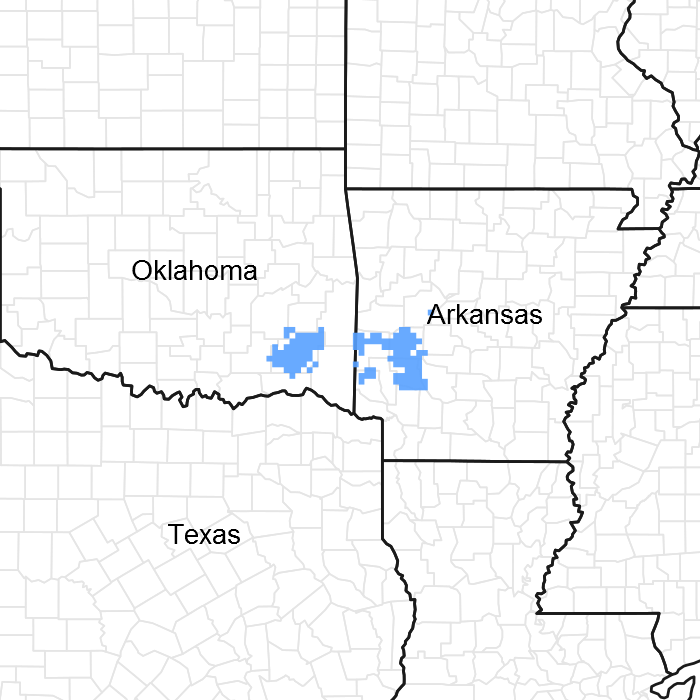
Natural Resources
Conservation Service
Ecological site F119XY017AR
Loamy Terrace
Accessed: 12/22/2025
General information
Provisional. A provisional ecological site description has undergone quality control and quality assurance review. It contains a working state and transition model and enough information to identify the ecological site.

Figure 1. Mapped extent
Areas shown in blue indicate the maximum mapped extent of this ecological site. Other ecological sites likely occur within the highlighted areas. It is also possible for this ecological site to occur outside of highlighted areas if detailed soil survey has not been completed or recently updated.
MLRA notes
Major Land Resource Area (MLRA): 119X–Ouachita Mountains
This ecological site is found in MLRA 119: Ouachita Mountains.
This area is in the Ouachita Mountains Section of the Ouachita Province of the Interior Highlands. The steep mountains are underlain by folded and faulted sedimentary and metamorphic rocks. Most of the stream valleys are narrow and have steep gradients, but wide terraces and flood plains border the Ouachita River in western Arkansas. Elevation ranges from 330 feet (100 meters) on the lowest valley floors to 2,625 feet (800 meters) on the highest mountain peaks. Local relief is generally 100 to 200 feet (30 to 60 meters), but it can exceed 980 feet (300 meters).
Classification relationships
South-Central Interior Large Floodplain
Summary: This floodplain system is found in the Interior Highlands as far west as eastern Oklahoma, as well as throughout the Interior Low Plateau, Cumberlands, Southern Ridge and Valley, and Western Allegheny Plateau, and lower elevations of the Southern Blue Ridge. Examples occur along large rivers or streams where topography and alluvial processes have resulted in a well-developed floodplain. A single occurrence may extend from river's edge across the outermost extent of the floodplain or to where it meets a wet meadow or upland system. Many examples of this system will contain well-drained levees, terraces and stabilized bars, and some will include herbaceous sloughs and shrub wetlands resulting, in part, from beaver activity. A variety of soil types may be found within the floodplain from very well-drained sandy substrates to very dense clays. It is this variety of substrates in combination with different flooding regimes that creates the mix of vegetation. Most areas, except for the montane alluvial forests, are inundated at some point each spring; microtopography determines how long the various habitats are inundated. Although vegetation is quite variable in this broadly defined system, examples may include Acer saccharinum, Platanus occidentalis, Liquidambar styraciflua, and Quercus spp. Understory species are mixed, but include shrubs, such as Cephalanthus occidentalis and Arundinaria gigantea ssp. gigantea, and sedges (Carex spp.). This system likely floods at least once annually and can be altered by occasional severe floods. Impoundments and conversion to agriculture can also impact this system.
Ecological site concept
This site is a rarely flooded woodland on a terrace with udic moisture and thermic temperature regimes. It has loamy soils.
Table 1. Dominant plant species
| Tree |
(1) Platanus occidentalis |
|---|---|
| Shrub |
Not specified |
| Herbaceous |
(1) Carex |
Click on box and path labels to scroll to the respective text.

